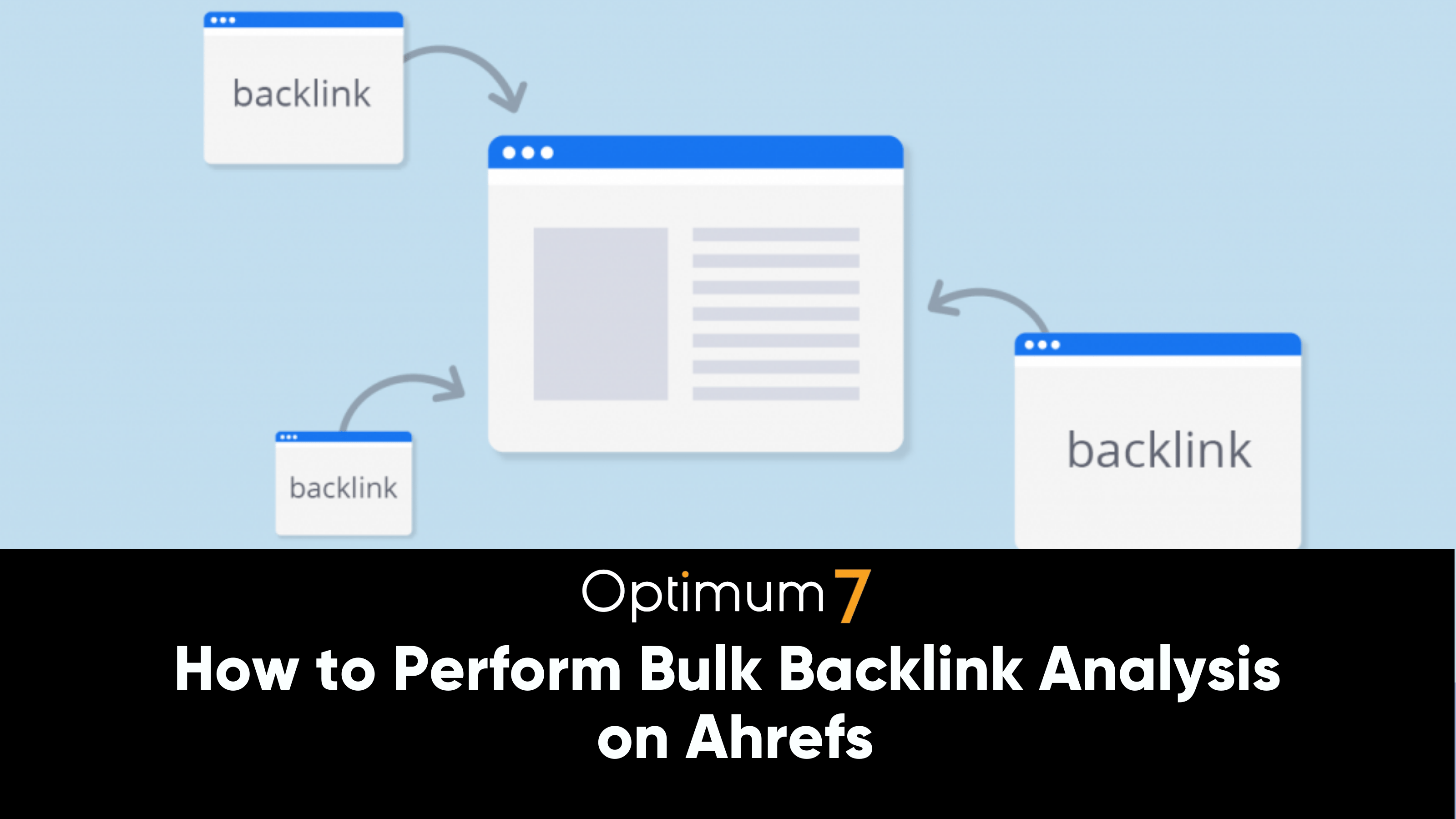Understanding the backlinks that direct organic traffic to your website is essential for effective search engine optimization (SEO). These relevant links enhance your site’s authority and significantly influence your rankings on search engines. The Ahrefs’ Batch Analysis tool is an invaluable asset for SEO professionals focused on building links, as it allows for simultaneous comprehensive backlink checks across multiple URLs. This tool streamlines the process of analyzing backlink profiles in bulk, providing critical insights for refining your SEO strategy and boosting organic traffic through strategic link building.
Getting Started with Ahrefs Batch Analysis
Signing Up and Accessing the Tool
To begin leveraging the Ahrefs Batch Analysis tool, you first need to sign up for an Ahrefs account. Visit the Ahrefs website, select a subscription plan that suits your needs, and create your account. Once you’ve logged in, navigate to the “More” menu on the navigation bar. Here, you’ll find the Batch Analysis tool listed among other valuable resources. This tool is readily accessible and designed to handle bulk URL processing efficiently, making it a go-to for SEO tasks that require large-scale backlink analysis.
Overview of the Batch Analysis Interface
Upon accessing the Batch Analysis tool, you’ll be greeted by a straightforward and user-friendly interface. Key features include a large input box where you can paste up to 200 URLs at a time. Below this, you’ll find options to select the mode of analysis—whether you want to analyze domains, subdomains, or exact URLs. Settings for preferred metrics can be adjusted to tailor the output to your specific needs. The interface is designed with clarity in mind, allowing you to easily configure and initiate your analysis without hassle.
Utilizing the Batch Analysis tool not only simplifies the process but also allows you to generate detailed backlink reports, providing key insights into the effectiveness of your link-building strategies.
Preparing Your URL List
For effective backlink analysis using Ahrefs’ Batch Analysis tool, the preparation of your URL list is a critical step. Here’s how you can optimize this process to ensure that your analysis yields actionable insights:
- Export URLs from Your Website: Begin by gathering the URLs you wish to analyze. You can export these from your website’s sitemap or use tools like Ahrefs’ Site Explorer to extract URLs that are already drawing backlinks. Ensure you include both high-priority pages and those that might benefit from improved backlink profiles.
- Organizing Your URLs: Once you have your list, organize the URLs into categories based on priority, page type, or any other classification that suits your analysis needs. This organization will help in segmenting the data for more targeted insights later on.
- Formatting the List: Ahrefs’ Batch Analysis tool accepts URLs in plain text format, with one URL per line. Ensure your list adheres to this format to avoid any processing errors. If you’re working with a large number of URLs, consider breaking them down into smaller batches to manage the analysis more effectively and to keep track of the results more efficiently.
- Checking for Duplication: Before uploading your list, check for and remove any duplicate URLs. Duplicate entries can skew your analysis results and may lead to unnecessary processing time.
With your list prepared and formatted correctly, you’re now ready to input these URLs into the Batch Analysis tool and start uncovering the wealth of backlink data Ahrefs offers. This is the first step towards a deeper understanding of your site’s backlink landscape and refining your SEO strategies for better performance.
Using the Batch Analysis Tool
Entering URLs and Initiating Analysis
Once your URL list is prepared, entering them into the Batch Analysis tool is straightforward. Here’s a step-by-step guide to get you started:
- Input URLs: Navigate to the Batch Analysis tool within your Ahrefs dashboard. In the input box, paste your list of URLs—up to 200 per batch. Ensure that each URL is on a new line to comply with the formatting requirements.
- Select Analysis Type: Choose whether you want to analyze by domains, subdomains, or exact URLs. This selection will determine the scope of the backlink data you receive, so choose the option that best aligns with your SEO objectives.
- Initiate the Analysis: Once your URLs are set and your settings are configured, click on the ‘Start Analysis’ button. The tool will then process the URLs, which may take a few minutes depending on the size of your batch and the server load at the time.
Understanding the Output Metrics
The Batch Analysis tool provides a range of metrics that are crucial for assessing the strength and quality of backlinks. Here’s what each metric means for your SEO:
- Ahrefs Rank: This ranks websites based on the quality and size of their backlinks. A lower rank indicates a stronger backlink profile.
- Domain Rating (DR): DR shows the relative strength of a website’s backlink profile compared to all other sites in Ahrefs’ database on a scale from 0 to 100.
- Number of Referring Domains: This metric indicates how many unique domains link to the given URL or domain, which can be a stronger indicator of a site’s authority than simply counting backlinks.
- Backlink Count: This shows the total number of backlinks pointing to a URL. More backlinks can improve a site’s visibility and authority, but quality is often more important than quantity.
- Social Metrics: These include social media shares across various platforms. While not a direct SEO ranking factor, social signals can indicate content popularity and broader engagement.
Understanding these metrics allows you to gauge the current standing of your website’s backlink profile. Analyzing these outputs helps identify strengths and areas for improvement, setting the stage for strategic SEO planning and execution. In the next section, we will delve into how to interpret this data to optimize your backlink strategy.
Interpreting and Utilizing the Data
Analyzing Backlink Quality
Once you have gathered your backlink data, the next essential step is to analyze this data to evaluate the quality of the external links in your site’s backlink profile. It’s important to distinguish high-quality backlinks from low-quality links, as the former are crucial for effective SEO, enhancing your site’s credibility and improving search engine rankings. To analyze data effectively, consider checking for broken links, which can negatively impact your SEO if left unresolved. Here’s how to assess the quality of backlinks using data from the Batch Analysis tool:
- Assess the Domain Rating (DR): High DR values indicate that the linking domains are authoritative and trustworthy. Prioritize backlinks from these domains as they are more beneficial for your SEO.
- Check the Relevance of Referring Domains: Links from domains that are closely related to your niche are more valuable. They not only drive relevant traffic but also reinforce your site’s relevance in your industry.
- Review the Linking Page Content: Analyze the context in which the backlink appears. Links embedded within high-quality, relevant content provide more SEO value than those randomly placed or within low-quality content.
- Identify Follow vs. Nofollow Status: ‘Follow’ links pass more value to your website, enhancing your authority. While ‘nofollow’ links are less valuable in terms of passing authority, they can still drive traffic and lend credibility to your website.
Identifying Link Building Opportunities
With a clear understanding of your existing backlink quality, you can now identify new link building opportunities:
- Spot Patterns in High-Performance URLs: Look for trends among URLs that attract high-quality backlinks. Understanding what content or page characteristics engage such backlinks can guide your content strategy.
- Analyze Competitor’s Backlinks: Use the Batch Analysis tool to check the backlink profiles of your competitors. Identifying where they are getting their backlinks can reveal new opportunities for you to explore similar sources.
- Leverage Untapped Sources: If you discover high-quality domains that have not yet linked to you but have linked to similar content, consider reaching out to these domains for potential link building.
- Build Relationships: Engaging with content creators, bloggers, and website owners who are influential in your niche can lead to natural and valuable backlinks.
By using the Batch Analysis tool to both analyze backlink quality and identify new link building opportunities, you can significantly enhance the efficacy of your SEO efforts. This strategic approach not only boosts your site’s authority but also contributes to its long-term success in search rankings.
Final Thoughts on Perfecting Your Link Building Strategy
Throughout this guide, we’ve explored how Ahrefs’ Batch Analysis tool can be a powerful asset in your SEO arsenal. From signing up and navigating the tool to analyzing and utilizing the backlink data, we’ve covered essential strategies to help you enhance your site’s SEO performance. Now, armed with these insights and techniques, you are better equipped to implement these methods in your own SEO strategy, aiming for improved search engine rankings and online presence. Remember, SEO is a continuous effort—regularly using tools like Batch Analysis will keep you ahead in the dynamic world of search engine optimization.
Level Up Your SEO Game with Optimum7
At Optimum7, we understand the complexities and challenges of mastering SEO and building effective backlink strategies. Our expertise and tailored approach enable us to enhance your company’s online visibility and search engine rankings through meticulous analysis and strategic link-building efforts. By partnering with us, you gain access to the deep industry knowledge needed to navigate the ever-evolving digital landscape successfully. Let Optimum7 help you turn these strategies into success stories, driving growth and improving your digital footprint!








